Part II: "The Human Being" - Creation in the Uterus
If a person does not use his common sense and ask himself the question "how did I come into being?" he will adopt an illogical attitude saying to himself, "I somehow came into being!...". With such reasoning, he will start to lead a life in which he will have no time to think on such issues.
However, a person with common sense should think how he was created and determine the meaning of his life accordingly. While doing this, he should not be afraid, as some people are, of ending up with the conclusion "I have been created". Those people mentioned above do not want to take any responsibility towards a Creator. They fear changing their lifestyles, habits, and the ideologies the have accepted in case they acknowledge that they are created. Therefore, they run away from obeying their Creator. Those who deny Allah and who "refuted them (His signs) wrongly and haughtily, in spite of their own certainty about them,"
(Surat an-Naml: 14) as described in the Qur’an, adopt this psychology.
On the other hand, a person who appraises his existence with wisdom and common sense will see nothing in himself but the signs of Allah’s creation. He will acknowledge that his existence depends on the co-operation of thousands of complicated systems, none of which he creates or controls. He will grasp the fact that "he is created" and, by knowing our Creator, Allah, he will try to understand for what purpose He "created" him.
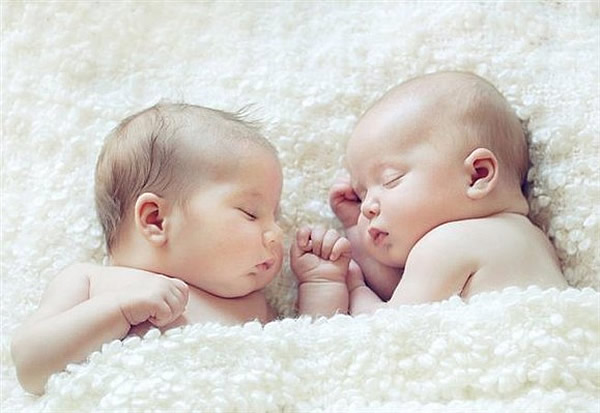 |
| "Does not man recall that We created him before when he was not anything?" |
For anyone who tries to comprehend the meaning of His creation there is a guide book: the Qur’an. This book is a guide sent to him and to all created men on earth by our Creator, Allah.
That the phenomenon of creation takes place just as described in the Qur’an conveys significant meanings to the men of understanding.
The following pages include various pieces of information, for those with wisdom and common sense, exhibiting how "they were created" and the marvel of this creation.
The story of man’s creation starts at two different locations very distant from each other. The human being steps into life by the union of two separate substances present in the bodies of women and men, which are created totally independently from each other yet in perfect harmony. It is certain that the sperm in the male body is not produced by the will and control of man, just as the egg in the female body is not formed by the will and control of woman. Indeed, they are not even aware of those occurrences.
We created you so why do you not confirm the truth? Have you thought about the sperm that you ejaculate? Is it you who create it or are We the Creator? (Surat al-Waqi’ah: 57-59)
It is obvious that both the substances, that coming from the man and that from the woman, are created in accordance with one another. The creation of these two substances, their union and transformation into a human being are indeed great miracles.
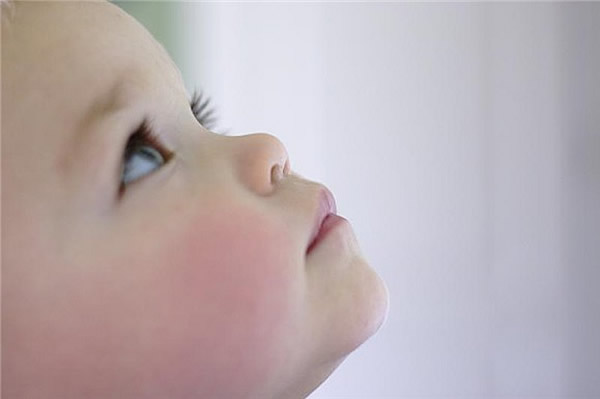 |
| Allah created you from dust and then from a drop of sperm and then made you into pairs. No female becomes pregnant or gives birth except with His knowledge. And no living thing lives long or has its life cut short without that being in a Book. That is easy for Allah. |
The Testicles and The Sperm
Sperm, which constitutes the first step in the creation of a new human being, is produced "outside" the man’s body. The reason for this is that sperm production is only possible in an environment two degrees cooler than normal body temperature. In order to stabilise the temperature at this level there is special skin on the testicles. It shrinks in cold weather and expands in hot weather, keeping temperature constant. Does the male himself "regulate" and arrange this delicate balance? Certainly not. The male is not even aware of this. Those who keep on resisting the fact of creation can only say that this is "an undiscovered function of the human body". The definition of "undiscovered function" is nothing but a "mere name".
Produced in the testicles at the rate of 1,000 per minute, sperm has a special design made for its journey to the female ovaries, a journey that progresses as if it "knows" the place. The sperm is composed of a head, a neck and a tail. Its tail helps it move in the uterus like a fish.
Its head part, containing a portion of the baby’s genetic code, is covered with a special protective shield. The function of this shield is revealed at the entrance to the mother’s uterus: here, the environment is very acidic. It is clear that the sperm is covered with a protective shield by "someone" who is aware of this acidity. (The purpose of this acidic environment is the protection of the mother from microbes.)
 |
| Sperm and the inside view of testicles |
It is not only millions of sperms that are ejaculated into the uterus. Semen is a mixture of various kinds of fluid. In the Qur’an this fact is emphasised in the verse below:
"Has man ever known a point of time when he was not something remembered? We created man from a mingled drop to test him, and We made him hearing and seeing." (Surat al-Insan: 1-2)
These fluids within the semen contain sugar, which is to provide the energy needed by the sperm. Besides, its basic composition has various tasks such as neutralising the acids at the entrance to the mother’s uterus, and maintaining the slippery medium for the movement of the sperms. (Here, we again see that two different and independent beings are created in accordance with each other.) The spermatozoa make a difficult journey within the mother’s body until they reach the ovum. No matter how much they defend themselves, approximately only a thousand out of the 200-300 million spermatozoa reach the ovum.
The Ovum
 |
While the sperm is designed according to the ovum, the ovum, on the other hand, is prepared to be the seed of life in a totally different medium.... While the woman is unaware, first, an egg matured in the ovaries is left in the abdominal cavity, and then it is caught in the arms placed at the end of the appendages called the fallopian tubes of the uterus. Following this, the egg starts to move on with the help of the movement of the cilia inside the fallopian tube. This egg is only as big as the half of a salt particle.
The place where the ovum and the sperm meet is the fallopian tube. Here, the ovum starts to secrete a special fluid. With the help of this secretion, the spermatozoa find the location of the ovum. We need to be aware: when we say that the ovum "starts to secrete", we are not talking about a man or a conscious being. It cannot be explained by coincidence that a microscopic protein mass "decides" on such an act "by itself" and then "prepares" and secretes a chemical compound to attract the spermatozoa to itself. There is evidently design at work.
Briefly, the reproduction system of the body is designed to unite the ovum and the sperm. This means that woman’s reproduction system is created in accordance with the needs of the spermatozoa and the spermatozoa are created in accordance with the needs of the environment within the woman’s body.
Meeting of the Sperm and The Ovum
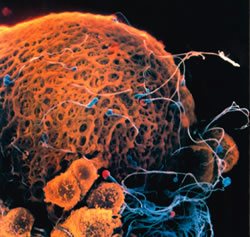 |
| Spermatozoa around the ovum |
When the sperm, which will fertilise the egg, draws closer to the ovum, the egg again "decides" to secrete a special fluid, prepared particularly for the sperm, which dissolves the protective shield of the sperm. Consequently, the solvent enzyme sacks which are found at the end of the sperm and are especially made for the ovum are laid open. When the sperm reaches the ovum, these enzymes drill the membrane of the ovum allowing the sperm to enter. The spermatozoa around the ovum start to compete to break in, but in general, only one sperm fertilises the ovum.
The Qur’anic verses describing this stage are very interesting. In the Qur’an, it is stated that a human being is made from an extract of base fluid, that is, the semen.
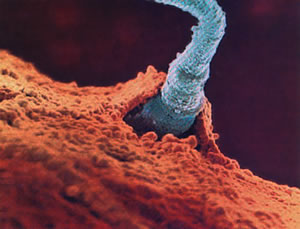 |
The Moment of UnionOne of the spermatozoa enters the ovum to fertilise it after a long and difficult journey. |
"...then He produced his seed from an extract of base fluid" (Surat as-Sajda: 8)
As the verse informs us, it is not the fluid itself carrying the spermatozoa that fertilises the egg, but only an "extract" of it. A single sperm within it is the fertilising agent, and moreover, the chromosomes in the sperm which are "an extract" of it.
When an ovum allows one sperm in, it is not possible for another sperm to enter it. The reason for this is the electrical field that forms around the ovum. The area around the egg is (-) negatively charged, and as soon as the first sperm penetrates the ovum, this charge changes to (+) positive. Therefore, the ovum, which has the same electrical charge as the external spermatozoa, starts repelling them.
This means that the electrical charges of the two substances, forming independently and separately from each other, are also in accordance with each other.
Finally, the male’s DNA in the sperm and the female’s DNA in the ovum combine. Now, there is the first seed, the first cell of a new human being in the mother’s womb: the zygote.
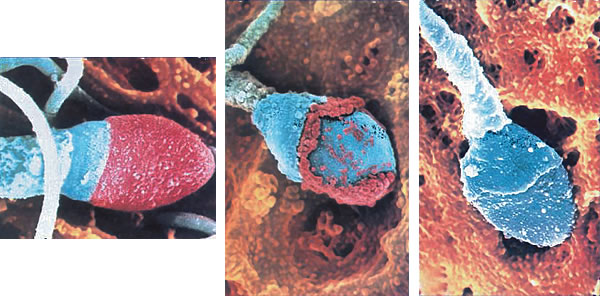 |
| When the sperm that will fertilise the egg draws close to the egg, the egg suddenly secretes a special fluid that dissolves the protective shield of the sperm. Consequently, the solvent enzyme sacks at the tip of the sperm are laid open. As soon as the sperm reaches the egg, these enzymes pierce the egg membrane, thus letting the sperm enter. |
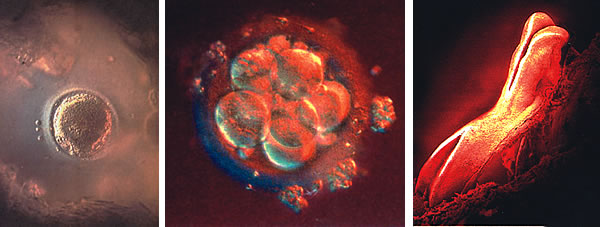 |
| The growth that starts with a single cell continues with the constant multiplication of cells. |
The Clot Clinging To The Uterus...
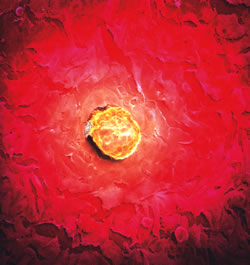 |
When the sperm of the male unites with the ovum of the female as described above, the essence of the baby to be born is formed. This single cell known in biology as the "zygote" will instantly start to grow by division and eventually become a "piece of flesh".
The zygote, however, does not spend its developmental period in a void. It clings to the uterus just like roots that are firmly fixed to the earth by their tendrils. Through this bond, the zygote can obtain the substances essential to its development from the mother’s body.
Such a detail could not be known without a sound knowledge of physiology. It is obvious that no one possessed such knowledge fourteen centuries ago. Interestingly enough, Allah always refers to the zygote developing in the mother’s womb as "a clot of blood" in the Qur’an:
Recite: In the Name of your Lord Who created man from a blood clot. Recite: And your Lord is the Most Generous. (Surat al-‘Alaq: 1-3)
Does man reckon he will be left to go on unchecked? Was he not a drop of ejaculated sperm? Then a blood clot, which He created and shaped, making from it both sexes, male and female? (Surat al-Qiyamah: 36-39)
The Arabic meaning of the word "blood-clot" is "a thing that clings to some place". The word is used literally to describe leeches that cling to a body to suck blood. It is obviously the best possible word to describe the zygote clinging to the wall of the uterus and absorbing its sustenance from it.
The Qur’an has more to disclose about the zygote. Perfectly clinging to the uterus, the zygote starts to develop. The uterus of the mother, meanwhile, is filled with a fluid called the "amnion liquid" that surrounds the zygote. The most important function of the amnion liquid in which the baby develops is to protect the baby against blows from outside. In the Qur’an, this fact is revealed as follows:
Did We not create you from a base fluid? Then place it in a secure repository? (Surat al-Mursalat: 20-21)
All of this information given in the Qur’an about the formation of man demonstrates that the Qur’an comes from a source that knows about this formation down to its slightest detail. This situation once more proves that the Qur’an is the word of Allah.
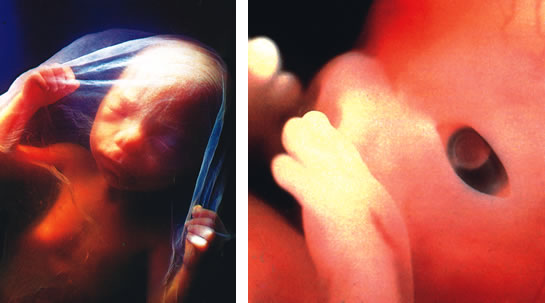 |
The Three Dark Regions |
| After fertilisation, the baby’s development takes place in three distinct regions. These regions are: 1. The fallopian tube: this is the region where the egg and the sperm unite and the where the ovarium connects to the uterus. |
| This is stated in the Qur’an as: "He creates you stage by stage in your mothers' wombs in a threefold darkness. That is Allah, your Lord. Sovereignty is His. There is no god but Him. So what has made you deviate?..." (Surat az-Zumar: 6) |
Meanwhile, the embryo that previously looked like a gel, with time transforms. In the initial soft structure, hard bones begin to form to provide the body the ability to stand upright. The cells, which were initially the same, become specialised: some form light-sensitive eye cells, some nerve cells sensitive to cold, heat and pain, and some cells sensitive to sound vibrations. Do the cells by themselves decide on this differentiation? Do they by themselves first decide to form a human heart or a human eye and then accomplish this incredible task? On the other hand, are they created appropriately for these purposes? Wisdom, intellect and soul will assent to the second alternative.
At the end of these processes, the baby completes its development inside the mother’s womb, then is born into the world. Now it is 100 million times bigger and 6 billion times heavier than it was initially....
This is the story of our first step into life, not those of any other organism. What can be more important for a man than finding the purpose of such an amazing creation?
 |
While The Eyes Form... |
It is illogical to think that all of these complicated functions occur "of their own volition". No one has the power to create himself, or another person or any other object? Allah creates all the events hitherto described, each moment, each second and each stage.
"Allah created you from dust and then from a drop of sperm and then made you into pairs. No female gets pregnant or gives birth except with His knowledge. And no living thing lives long or has its life cut short without that being in a Book. That is easy for Allah." (Surah Fatir: 11)
Our body, which from only a "drop of sperm", transforms itself into a human, has millions of delicate balances. Even though we are not aware of them, there are extremely complex and delicate systems in our body that help us survive. Allah, the only Owner, Creator and Lord of man built all these systems, in order for him to understand that "he is created".
Man is a being Allah created. Since he is created, he is not to be "left uncontrolled (without purpose)".
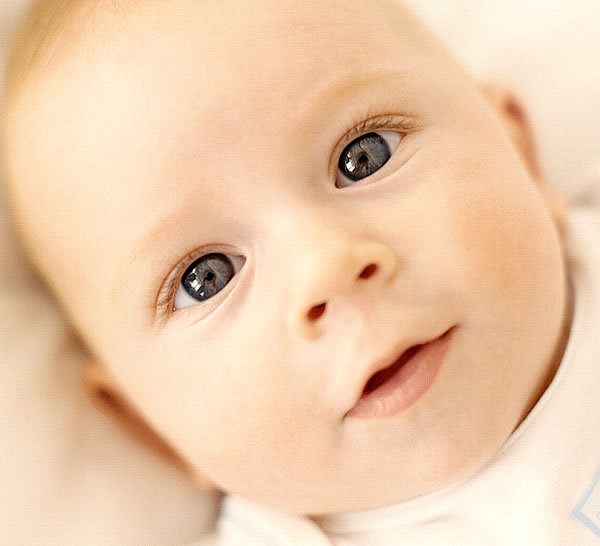 |
| Or were they created out of nothing, or are they the creators? Or did they creat the eavens and the earth? No, in truth they have no certainty. |
 |
| The first days of a human being’s face (left) and its final shape |
| "It is Allah Who made the earth a stable home for you and the sky a dome, and formed you, giving you the best of forms" |
Mother's Milk...
 |
The Sucking ReflexBabies are born from their mother’s womb with the reflex to suck. Their sucking exercises, which start with thumb sucking in the womb, have a vital importance in the feeding of the baby after birth, because there is no other way for the baby to get milk, which is its only food source. |
The feeding of a new human being, which has grown from the transformation of a sperm to a baby, is a miracle on its own. Human milk is the best nutrition possible, and it is produced neither by the mother’s help nor by anyone else’s.
Thanks to the substances in its composition, mother’s milk is both an excellent food-source for the newborn and a substance that increases the resistance of the mother as well as the baby to diseases. Doctors agree that artificial baby food should only be preferred if the milk of the mother is not adequate, and that babies should be fed with mother’s milk, especially in the first months. Now, let us look at the features of this milk:
◉ The most interesting aspect of mother’s milk is that its concentration changes according to the developmental phases of the baby. The amount of calories and the food content change according to whether the baby’s delivery was premature or on time. If the baby is premature, the fat and protein concentration is higher in the mother’s milk than a baby would normally need, because the premature baby needs more calories.
◉ Immune system elements that the baby needs, such as antibodies or defence cells, are given to the baby ready-made in the mother’s milk. Just like professional soldiers, they defend the body to which they do not belong and protect the baby from its enemies
◉ It is antibacterial. Although bacteria are produced in normal milk if it is left at room temperature for six hours, no bacteria are produced in mother’s milk if left for the same period.
◉ It protects the baby against arteriosclerosis.
◉ The baby quickly digests it.
We know that none of the artificial baby food produced in modern laboratories by expert dieticians is as beneficial as the natural mother’s milk. How can we answer the question, "Who produced this baby milk in a human body when the mother herself is even unaware of its production, and yet it is superior to those produced in laboratory conditions"? It is very clear that mother’s milk is brought into being by the Creator of the baby who is in need of this milk....
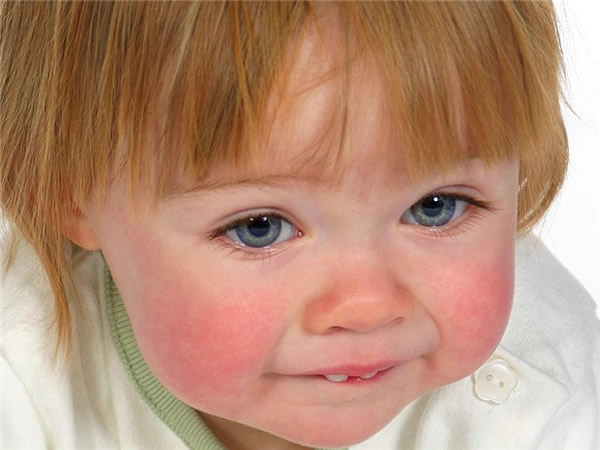 |
- The Ability to See the Signs of Allah
- Part I: "The Four Animals Emphasised In The Qur’an" - The Gnat
- Part I: "The Four Animals Emphasised in the Qur’an" - The Honey Bee
- Part I: "The Four Animals Emphasised in the Qur’an" - The Camel
- Part I: "The Four Animals Emphasised in the Qur’an" - The Fly
- Part II: "The Human Being" - Creation in the Uterus
- Part II: "The Human Being" - The Mechanisms in Our Body
- Part II: "The Human Being" - The Defence System
- Part III: "The signs in living things" - Professional Hunters
- Part III: "The Signs in Living Things" - Defence Techniques
- Part III: "The Signs in Living Things" - Amazing Architects
- Part III: "The Signs in Living Things" - The Mysteries In The Reproduction of Animals
- Part III: "The Signs in Living Things" - The Migration of Birds
- Part III: "The Signs in Living Things" - Nature and Technology
- Part IV: ''The earth''
- Part V: ''Recent Scientific Findings and the Qur'an''- Verses of the Qur'an and the Universe
- Conclusion
